Cambodia: rich in history and culture
9 July 2024

I caught the travel bug early but paused to focus on my career and family. Now, I explore the world, share authentic travel experiences, and inspire others through my blog, mollywozhere. Join me for tips, stories, and adventures!
- Egg coffee – one of my amazing experiences in Vietnam! - 9 July 2024
- Cambodia: rich in history and culture - 9 July 2024
- Angkor Wat: Cambodia’s architectural marvel - 9 July 2024
Visiting Cambodia for the first time was a dream come true, especially since my main goal was to explore the incredible Angkor Complex, which had been on my bucket list for ages. Combining Cambodia with Vietnam was convenient, given their proximity. I obtained my Cambodian visa online from the UK, which was straightforward and quick. Alternatively, you can get a visa on arrival, though it costs a bit more and is paid in US dollars.
Cambodia is a country of contrasts—ancient temples juxtaposed with bustling cities, tranquil countryside beside vibrant markets. Exploring its treasures, meeting its people, and savoring its cuisine will create lasting memories of a truly unforgettable journey.
While Cambodia has much to offer, it’s also important to recognize its recent history, including the Khmer Rouge regime and the Killing Fields. Visiting sites like the Tuol Sleng Genocide Museum and the Choeung Ek Killing Fields provides insight into Cambodia’s tragic past and is a solemn reminder of the resilience of its people.
Phnom Penh - capital of Cambodia
I teamed up with another traveler and hired a local tuk-tuk driver for a city tour. We negotiated a few hours of his time in dollars to show us around the famous sites, and he did so with great enthusiasm! While he wasn’t as knowledgeable as a professional guide and his English wasn’t fluent, we were satisfied with the experience.
I made a personal choice not to join the optional excursion to visit the Tuol Sleng Prison Museum and the “Killing Fields” of Choeung Ek. Some of my fellow travellers who went on the tour shared that it provided a poignant insight into the brutal rule of the Khmer Rouge, but many were deeply moved to tears, and some even regretted going. Ultimately, whether or not to visit these sites is a decision you’ll need to consider carefully.
Cambodia’s history is both rich and tragic, and each traveller’s experience can be deeply personal. It’s important to prioritize your own emotional well-being while exploring this remarkable country.
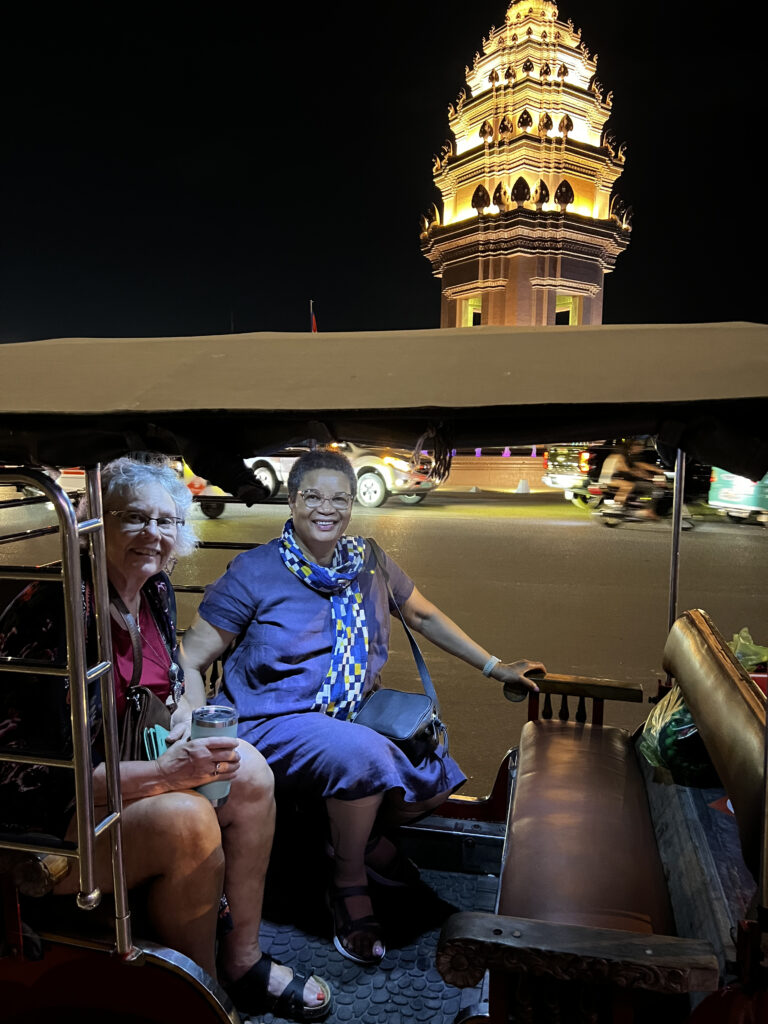
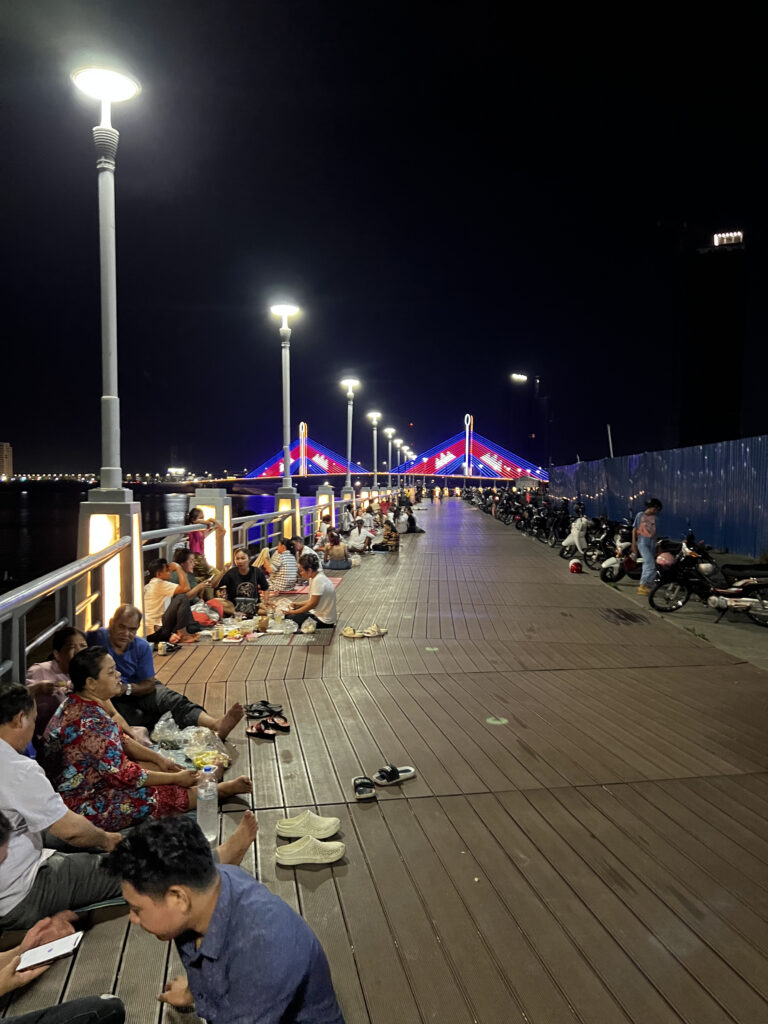
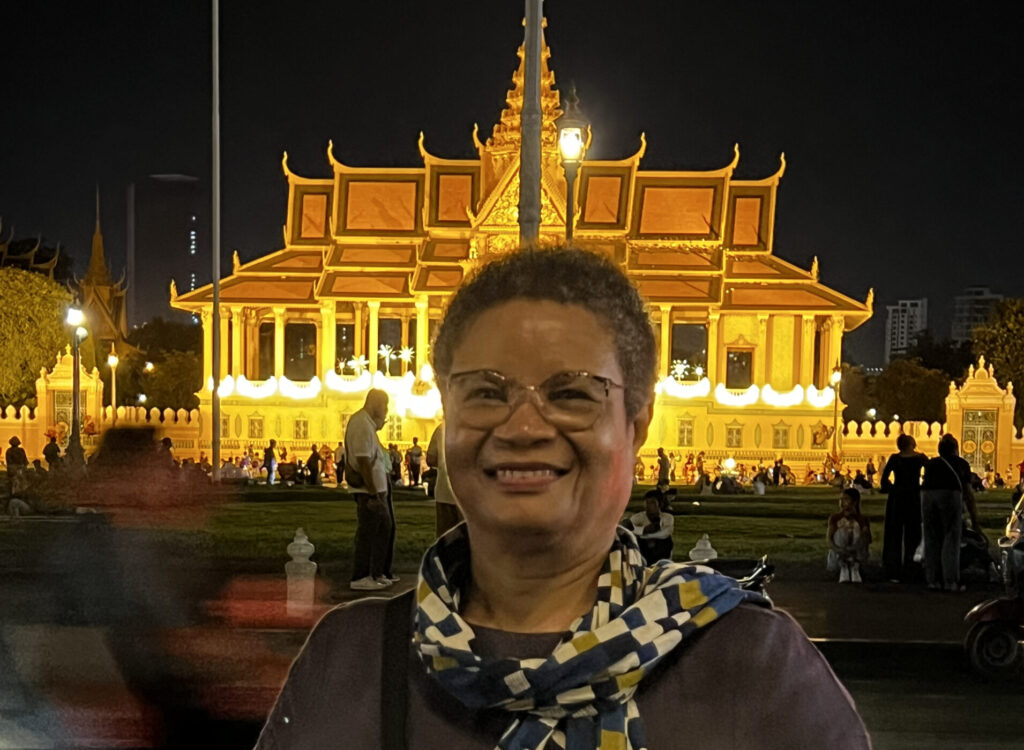
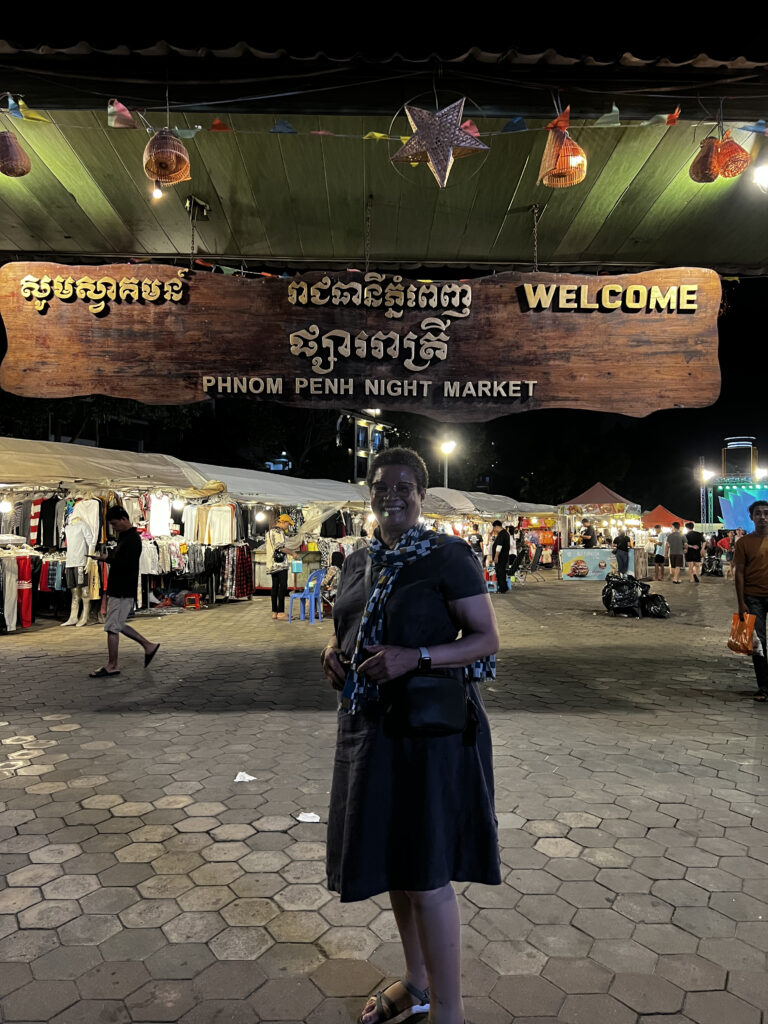
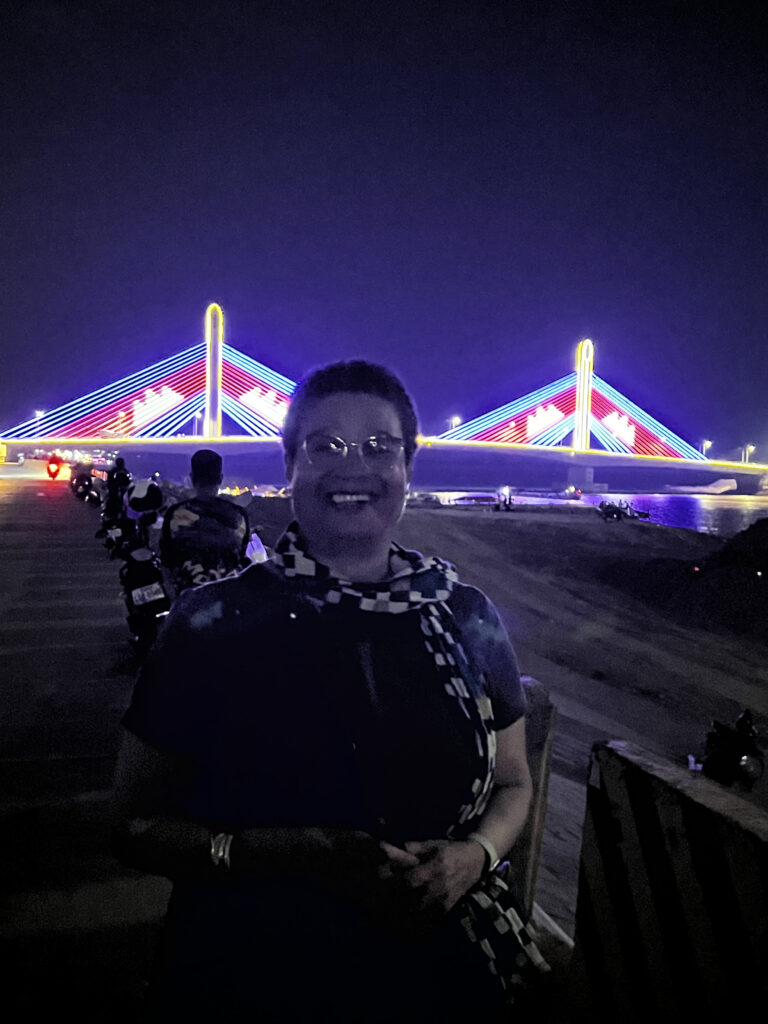
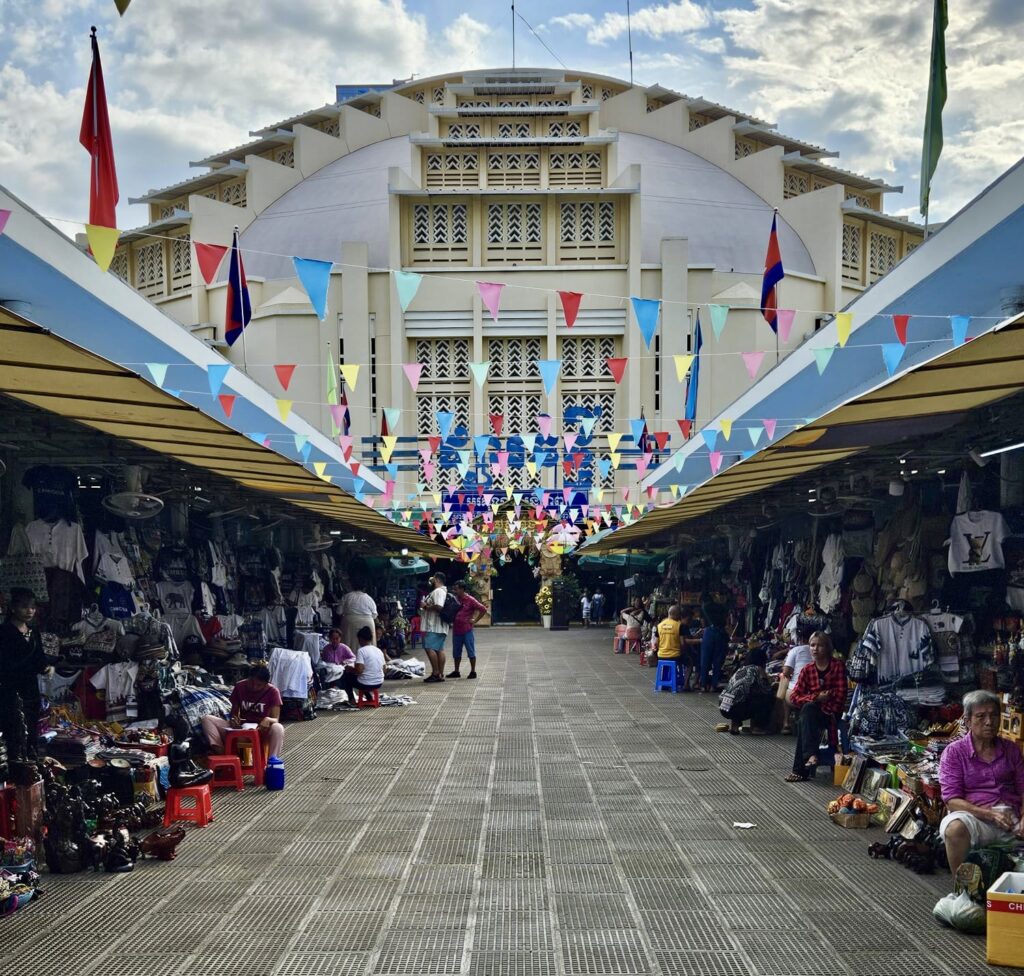

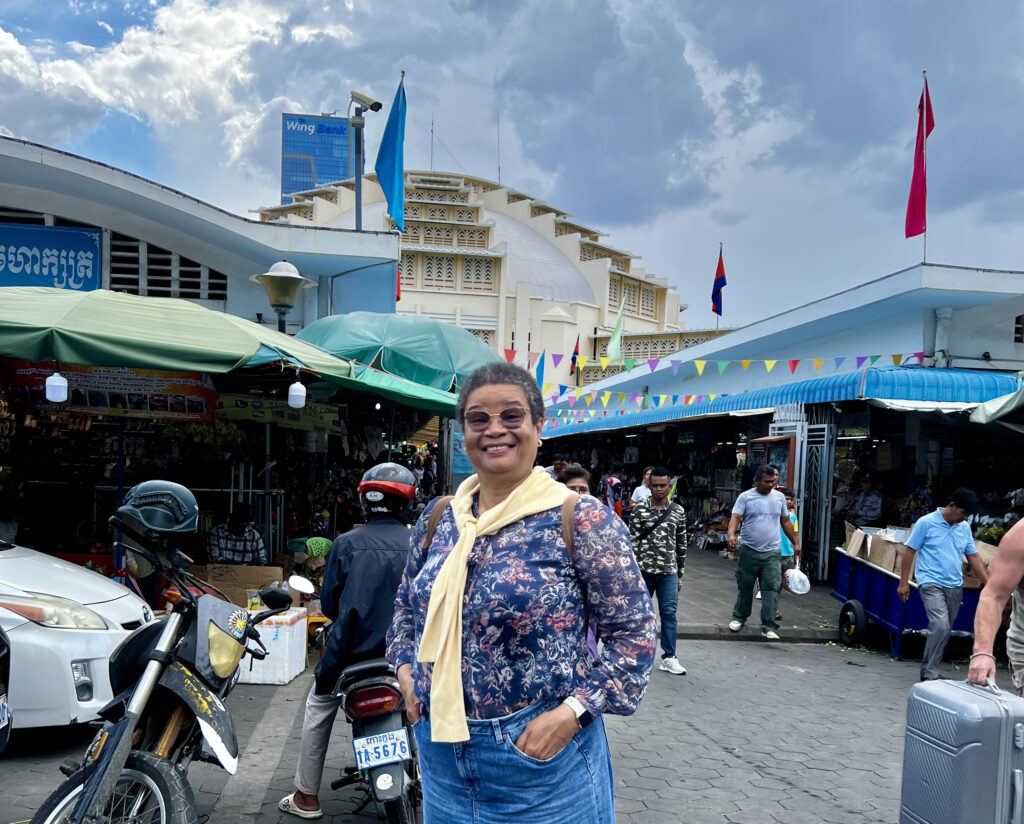
Siem Reap - gateway to Angkor Wat
After a brief stay in Phnom Penh, we boarded the Giant Ibis/Mekong Express bus for the approximately 6-hour journey to Siem Reap. Known as the gateway to Angkor Wat, Siem Reap is where most visitors head straight for the main attraction.
During our journey, our guide made a stop at a local market to introduce us to Cambodia’s unique delicacies – various insects fried in a variety of spices! Yes, believe it or not, I tried one of these delicacies – the leg of a tarantula! However, I couldn’t bring myself to eat the entire creature, and I wasn’t alone in that sentiment. In fact, only a few brave souls in our group dared to taste it. It certainly made for a memorable culinary adventure!
Siem Reap’s vibrant culture and its proximity to Angkor Wat promise an incredible experience for any traveller exploring this fascinating part of Cambodia.
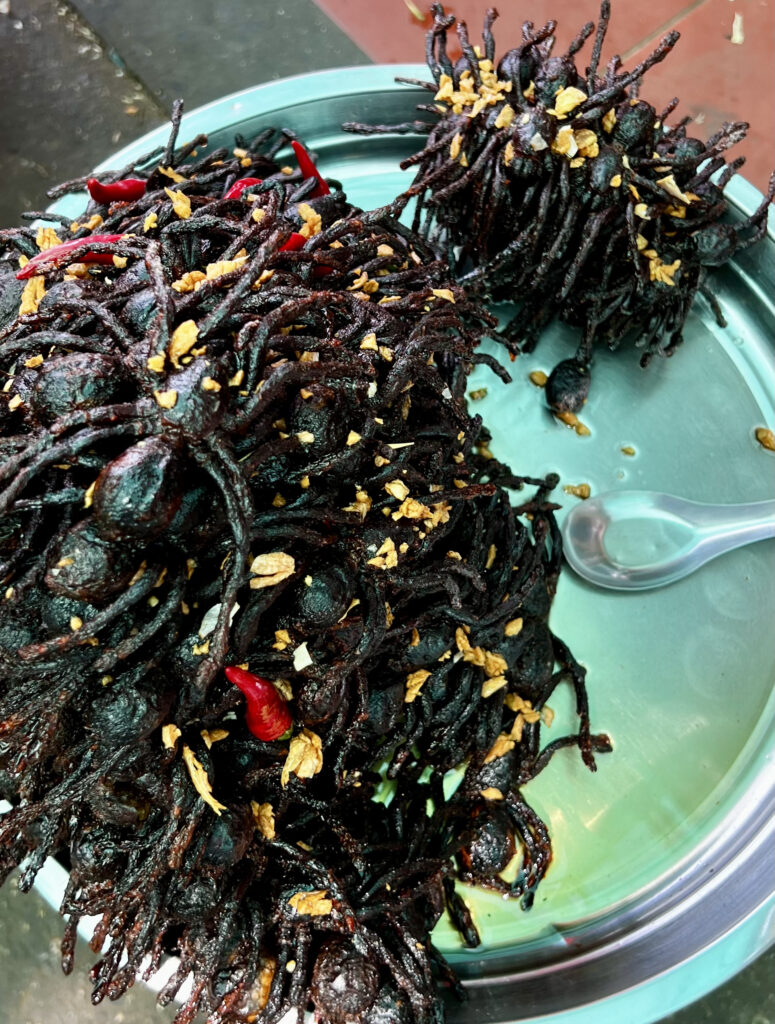
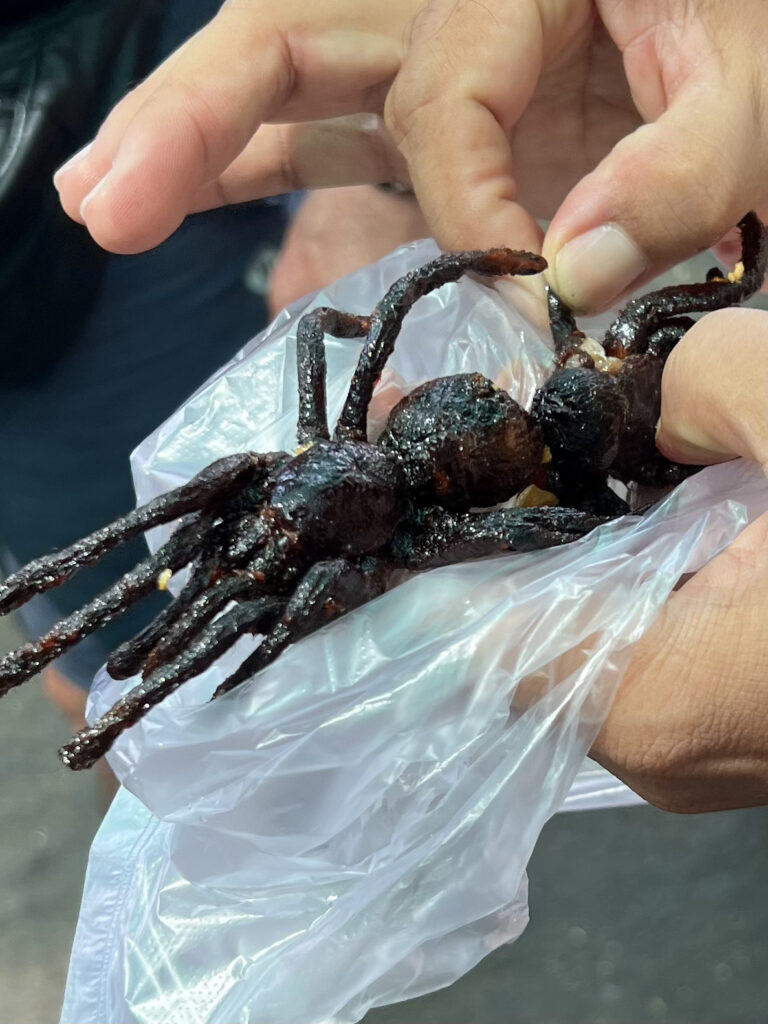
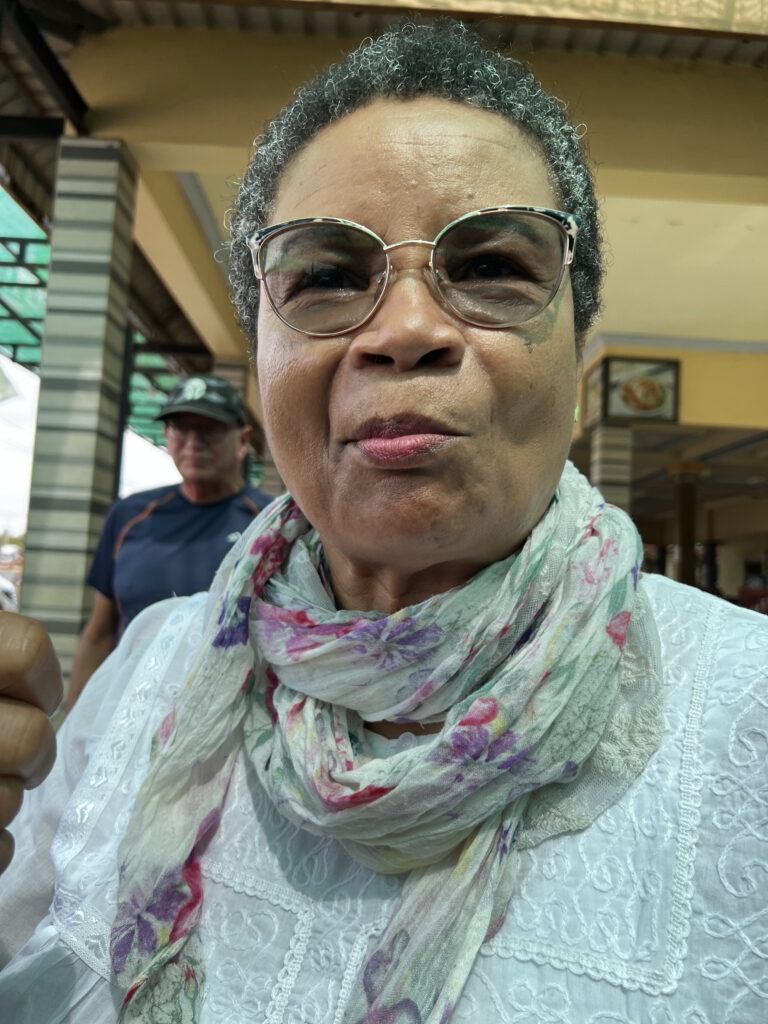
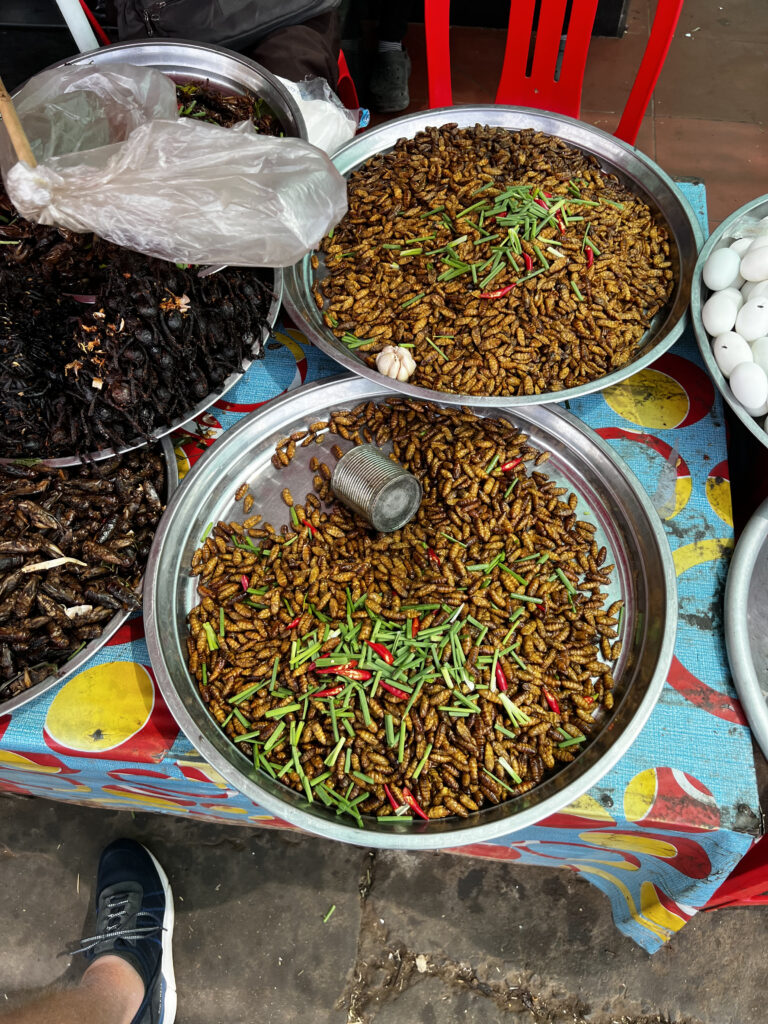
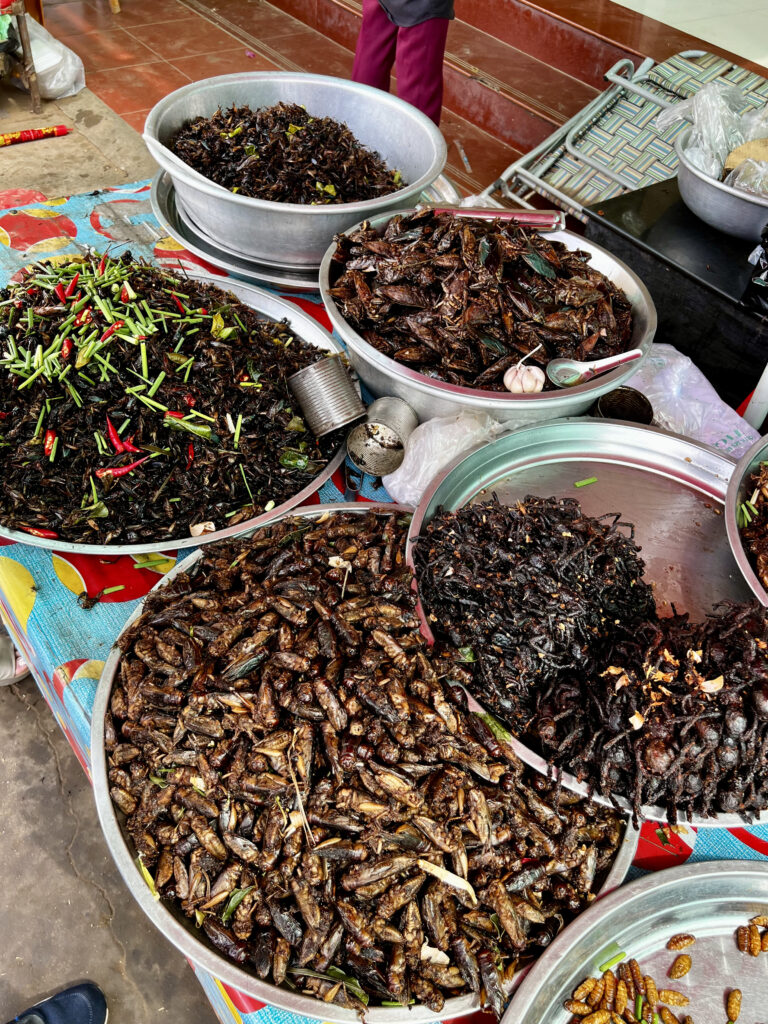
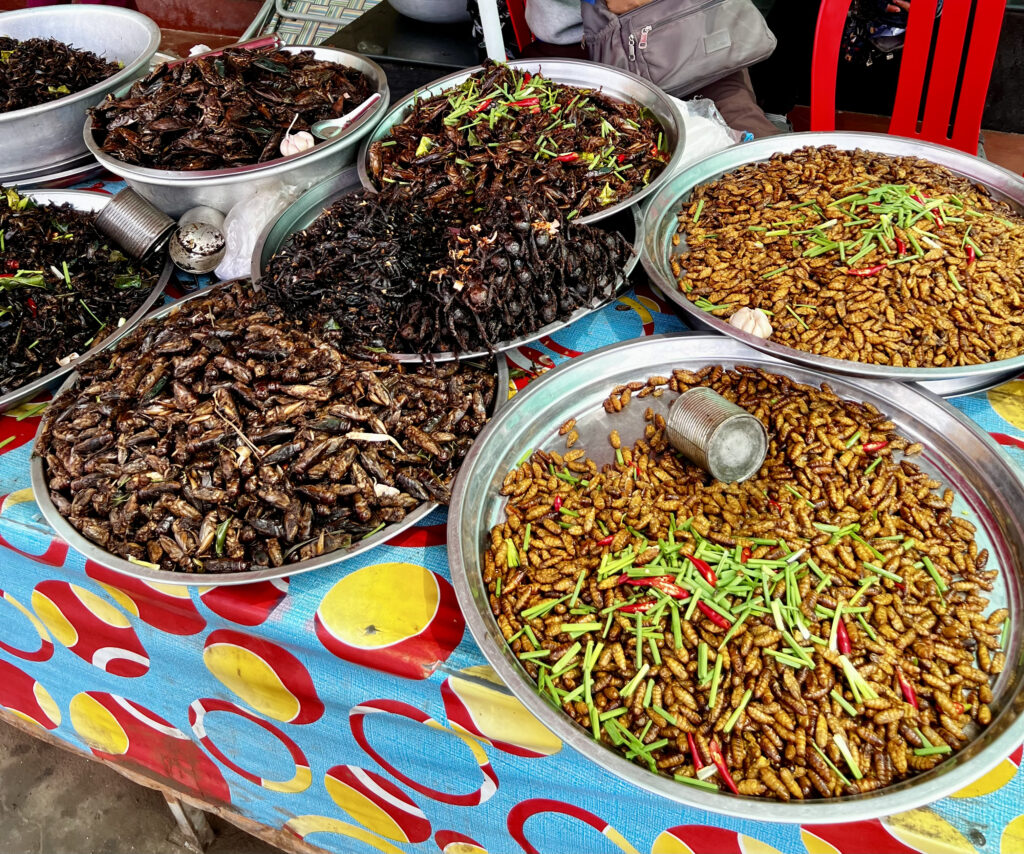
A fellow traveller, Diane, and I took charge of organising our own excursion to Tonle Sap Lake, the largest freshwater lake in Southeast Asia, situated on the Mekong Delta and a vital source of various fish species for Cambodia.
Visiting during the dry season in May meant the lake had largely drained into the Mekong River near Phnom Penh. This revealed the stilts of many floating houses, and while there were several fishing boats around, the activity seemed subdued. Along the way, we also made a stop at a crocodile farm, although I wasn’t particularly impressed with it.
Despite that, the boat ride itself was serene and relaxing, allowing us to soak in the peaceful atmosphere of Tonle Sap Lake. It was a tranquil escape from the bustling sights of Siem Reap and a chance to appreciate the natural beauty of Cambodia’s waterways.

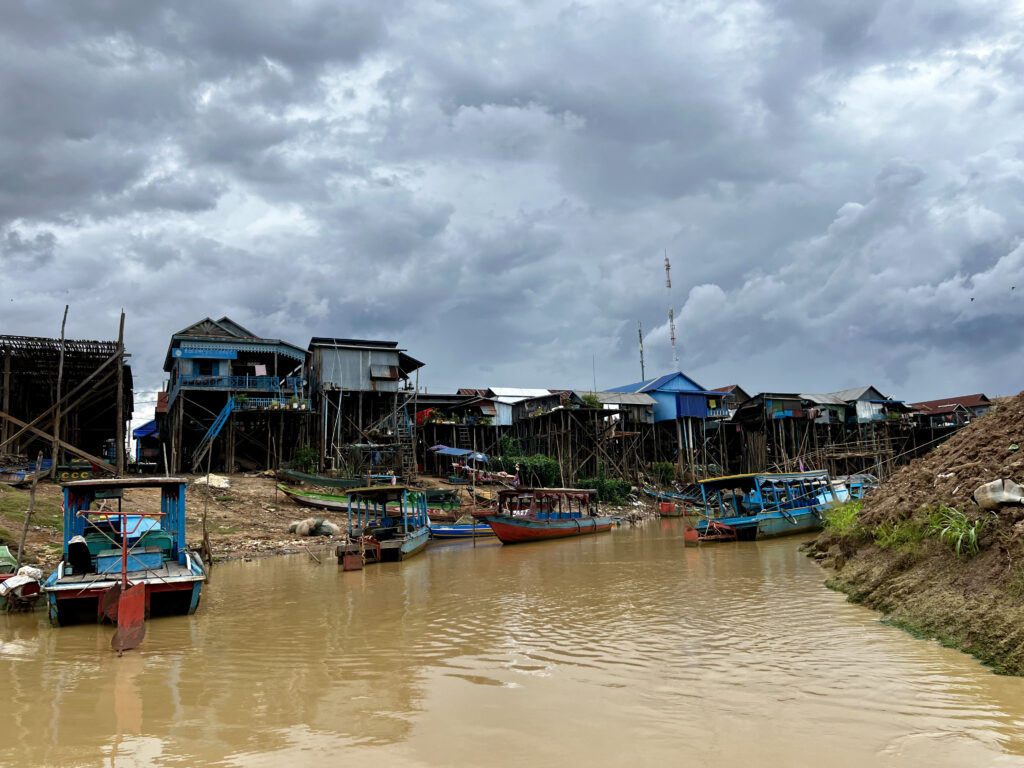
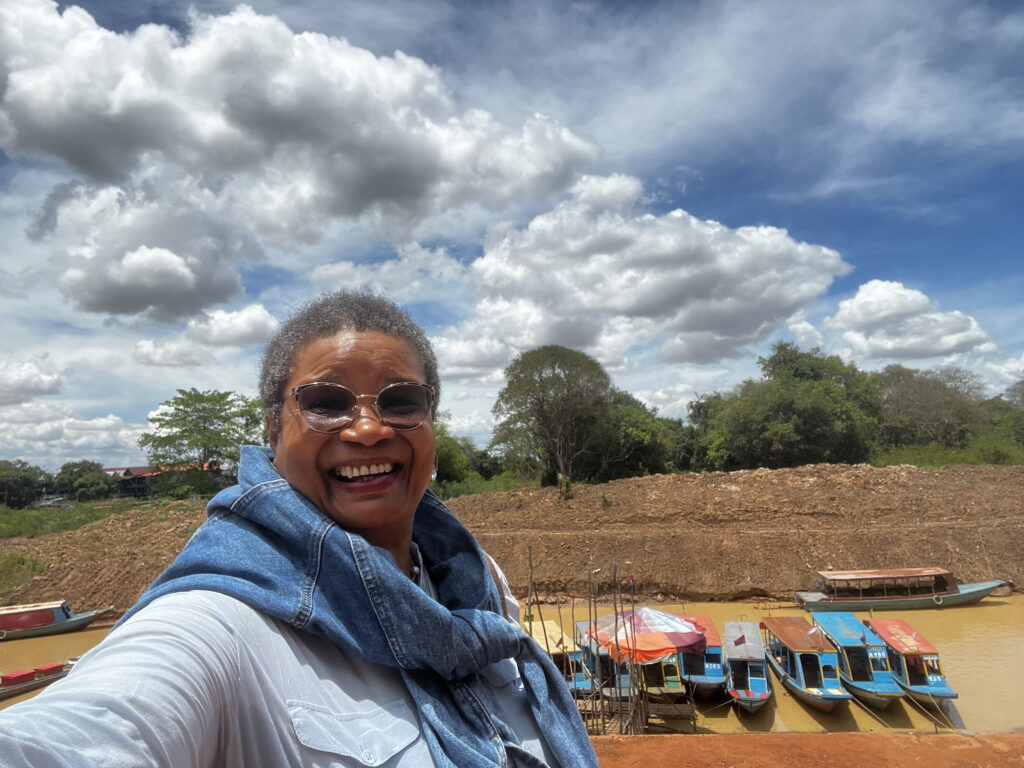
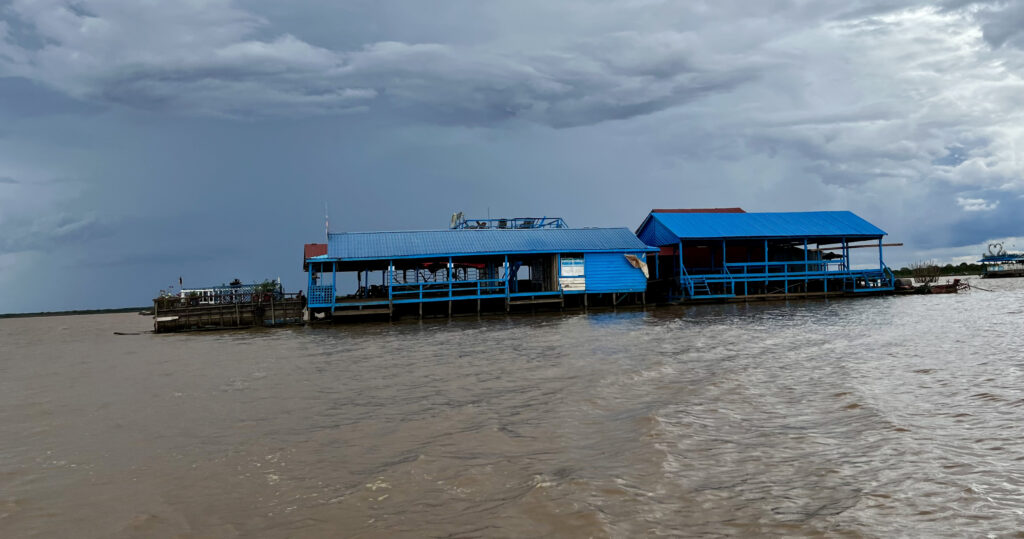
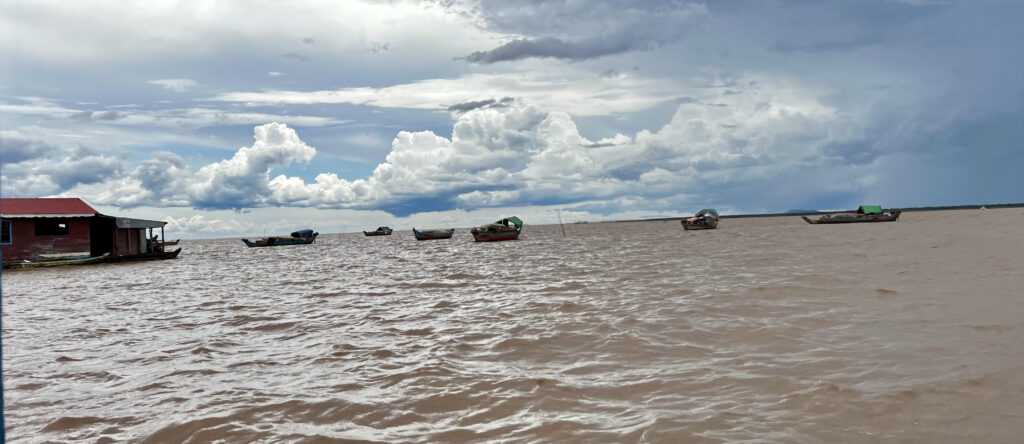
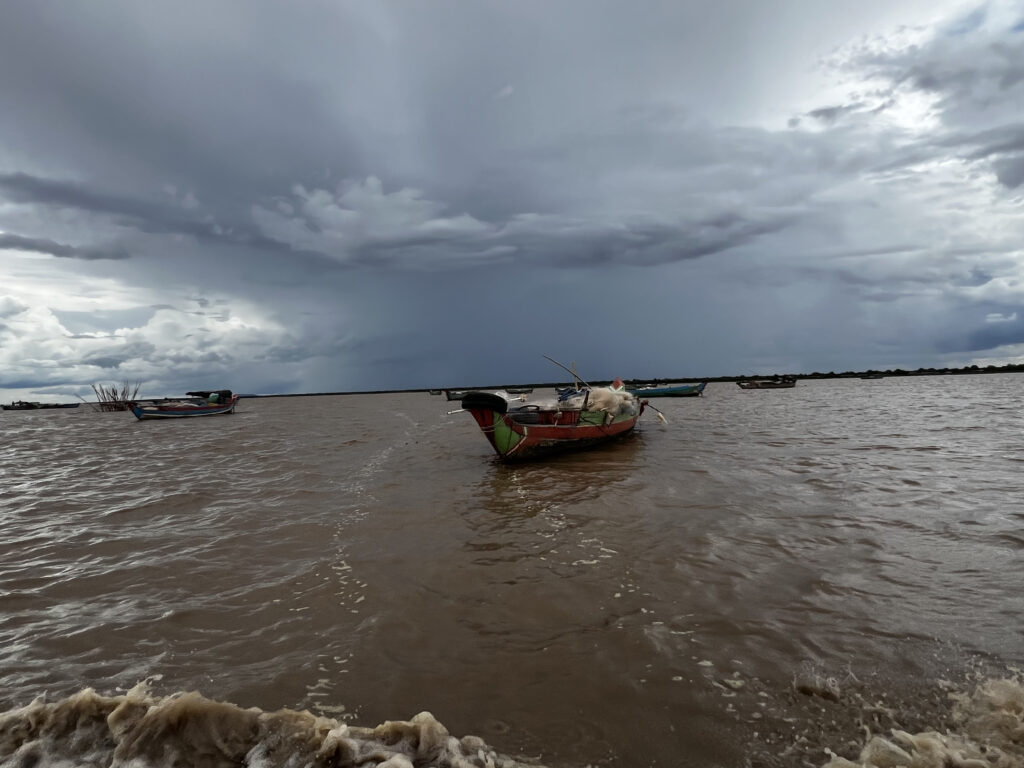
In Cambodia, tuk-tuks and motorbikes are popular ways to get around cities, while buses and taxis connect major destinations. During our visit, we opted for a tuk-tuk to explore the main attractions, including the lively “Pub Street” and bustling night market, which were filled with activity, especially after dark. It was undeniably touristy, yet still vibrant and enjoyable.
One of the highlights of my trip was attending a cultural evening show featuring traditional dancers, paired with a delicious dinner and drinks. It was a captivating experience that gave me a deeper appreciation for Cambodian arts and traditions.
The warmth and hospitality of the Cambodian people also left a lasting impression on me. Locals were incredibly welcoming and eager to share their culture, making every interaction memorable and enriching.
Overall, my time in Cambodia was delightful, and I’m confident you’ll find it equally rewarding. Whether exploring ancient temples, savoring local cuisine, or experiencing cultural performances, Cambodia offers a unique and unforgettable journey for every traveller.
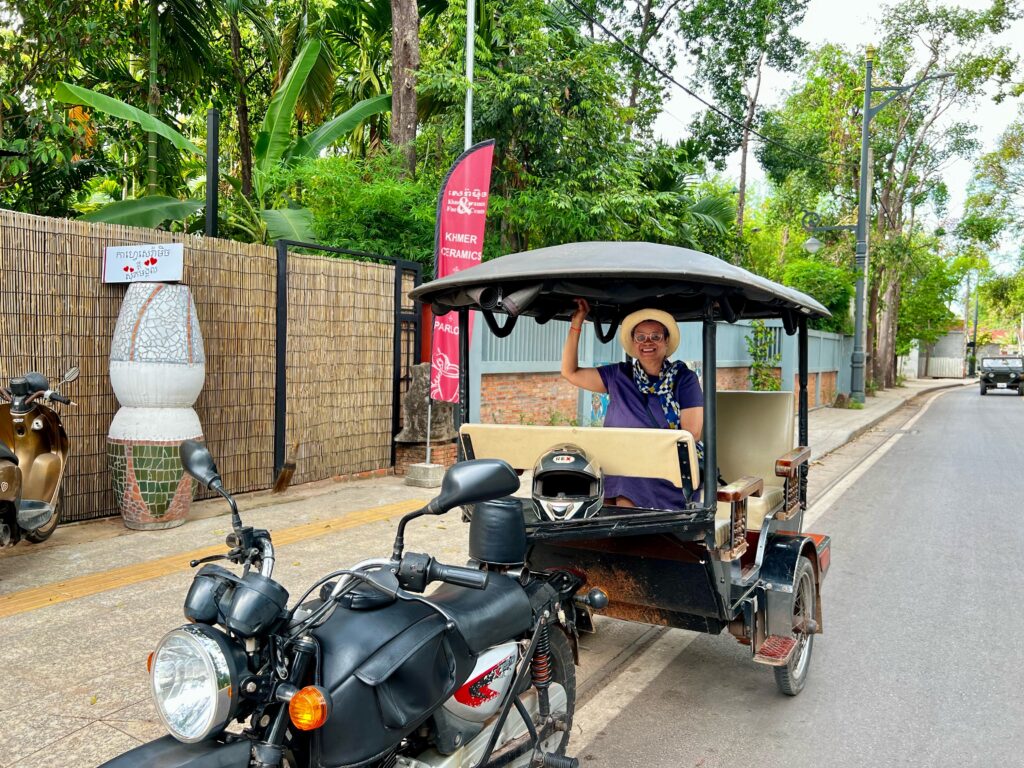
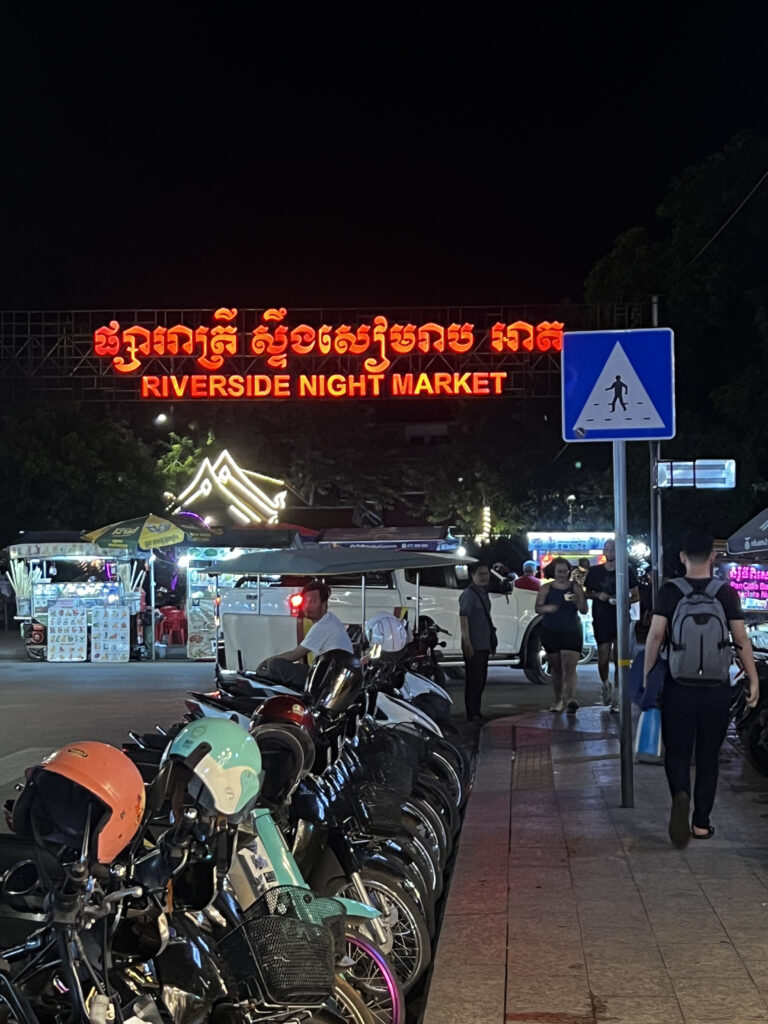
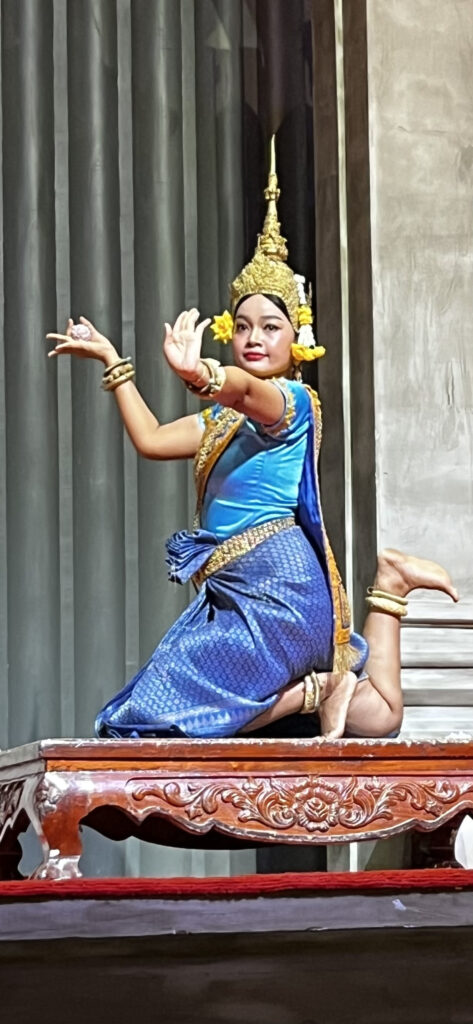
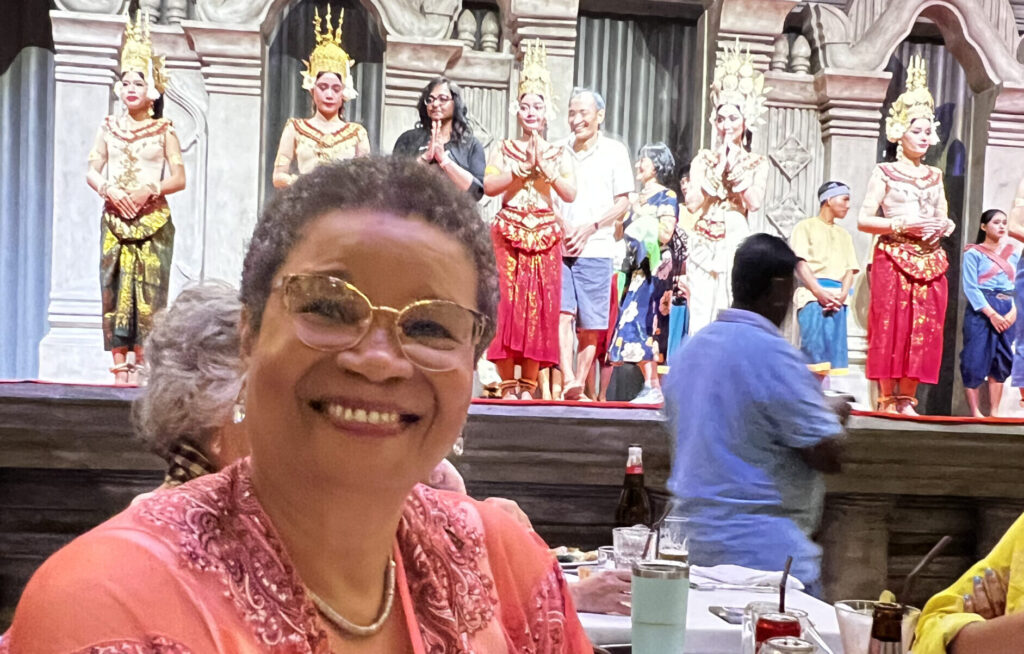
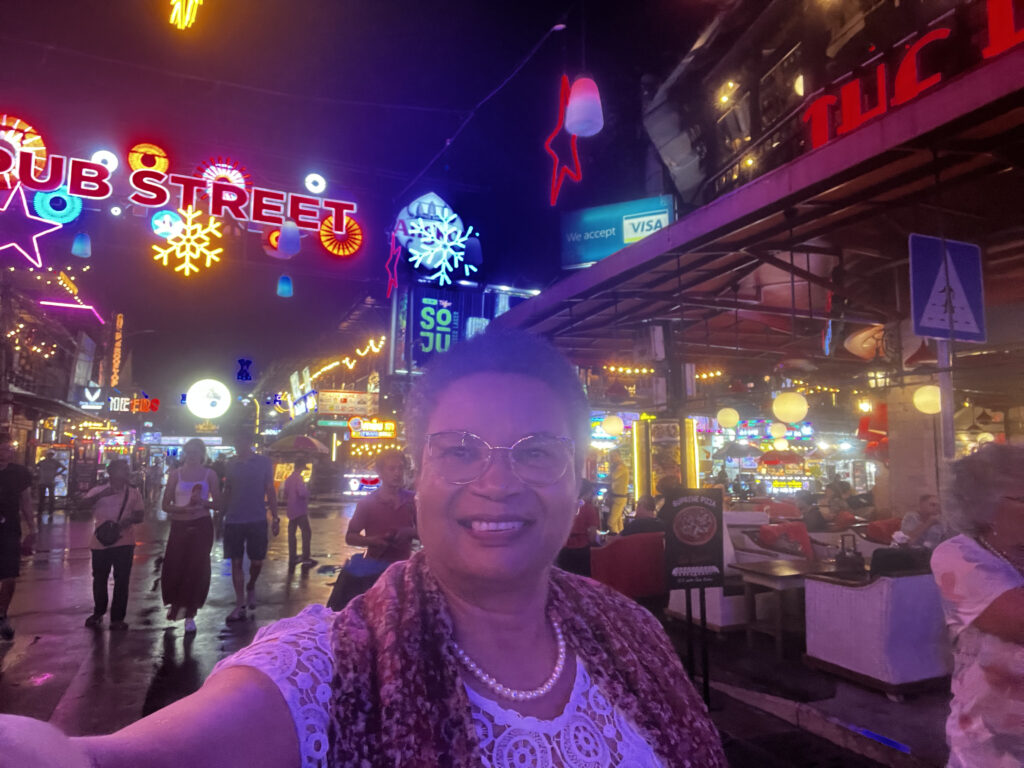
Practical Tips:
- Visa: Most visitors need a visa to enter Cambodia, which can be obtained on arrival or online before travel.
- Currency: The Cambodian Riel (KHR) is the local currency, but US dollars are widely accepted.
- Transport: Tuk-tuks and motorbikes are common modes of transport within cities, while buses and taxis connect major destinations.
- Etiquette: Dress modestly when visiting temples and show respect for local customs and traditions.
- Health: Stay hydrated, use insect repellent (especially near water), and be cautious with street food hygiene.












Glad you are a it again. Love them.
Thank you very much for appreciating my posts. xx
Nice one. Sounds interesting. Well done.
Thank you.I am glad you enjoyed reading my post.